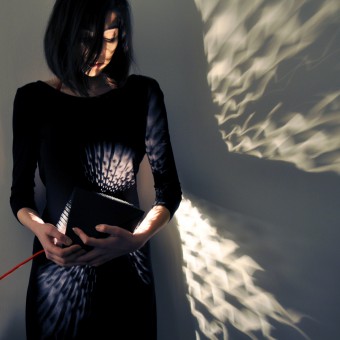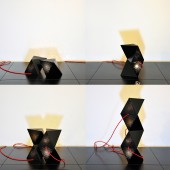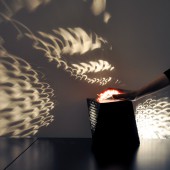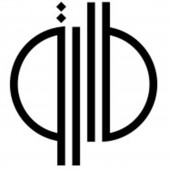Twisted Diamond Lamp by Tarek Elkassouf |
Home > Winners > #39315 |
 |
|
||||
| DESIGN DETAILS | |||||
| DESIGN NAME: Twisted Diamond PRIMARY FUNCTION: Lamp INSPIRATION: Twisted Diamond is part of The Edge Beirut Revisited Collection, an evolution of The Edge Beirut Collection. The series of furniture and lighting products take a cue from the city of Beirut, a city always on the edge of instability, chaos, creativity and adaptability. Twisted Diamond is inspired by the context of the designer's Middle Eastern upbringing and his architectural background. It engages the precepts of Middle Eastern geometric patterns and repetition of forms that can be found in Arabic architecture. UNIQUE PROPERTIES / PROJECT DESCRIPTION: Twisted Diamond takes the pure form of a cube, distorts, bends and twists it with such precision that if unbent and untwisted it would return to its original cube form. Its geometric form allows for each individual lamp unit to form part of a repeating pattern, to be stacked, rotated and flipped to create different lamp shapes and forms to suit the mood and space of its user. The motif is a contemporary take on the moucharabiah lamp of the traditional Middle Eastern souk. OPERATION / FLOW / INTERACTION: The Twisted Diamond unit is akin to a piece of puzzle that can be flipped, rotated, and stacked to form different objects to suit the mood and taste of its user. The geometric form of the unit also allows it to fit together with other units into various shapes and forms to suit the space in which it is being used. PROJECT DURATION AND LOCATION: The project started in November 2014 and finished in January 2015 in Beirut. FITS BEST INTO CATEGORY: Lighting Products and Fixtures Design |
PRODUCTION / REALIZATION TECHNOLOGY: Twisted Diamond is made from steel, with a charcoal paint finishing to give it a velvety touch. It is perforated through laser cutting. It is hand welded, assembled and painted by artisans in Lebanon. SPECIFICATIONS / TECHNICAL PROPERTIES: 160mmx160mmx160mm TAGS: folding, welding, steel, origami, handmade RESEARCH ABSTRACT: Twisted Diamond engages Middle Eastern geometric patterns and repetition of forms that can be found in Arabic architecture. The pure form of the cube is chosen and is then distorted, bent and twisted. The geometric shape of the unit allows for repetition of forms, stacking, rotation where one unit or its plural can create many different forms. The designer also researched the essence of the oriental light often seen in traditional Middle Eastern souks, and implemented its principles in the contemporary shape of the Twisted Diamond. CHALLENGE: Lebanon does not have a developed manufacturing sector. The designer however believed it was essential that the designs were made in Lebanon in order for the collection to be true to its inspiration - Beirut. The primary reasons there is no thriving manufacturing sector in the country also affected the designers smaller-scale production. These include electricity problems, infrastructure problems and constant instability with war in neighbouring Syria. Such factors often led to unforeseeable delays in the designers production. Another challenge was finding the right artisans. ADDED DATE: 2015-02-22 06:35:08 TEAM MEMBERS (1) : IMAGE CREDITS: Photographer: tarek elkassouf |
||||
| Visit the following page to learn more: http://tarekelkassouf.com | |||||
| AWARD DETAILS | |
 |
Twisted Diamond Lamp by Tarek Elkassouf is Winner in Lighting Products and Fixtures Design Category, 2014 - 2015.· Read the interview with designer Tarek Elkassouf for design Twisted Diamond here.· Press Members: Login or Register to request an exclusive interview with Tarek Elkassouf. · Click here to register inorder to view the profile and other works by Tarek Elkassouf. |
| SOCIAL |
| + Add to Likes / Favorites | Send to My Email | Comment | Testimonials | View Press-Release | Press Kit |
Did you like Tarek Elkassouf's Lighting Design?
You will most likely enjoy other award winning lighting design as well.
Click here to view more Award Winning Lighting Design.








